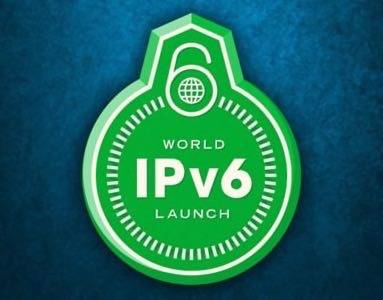
Welcome to the new Internet! Last night, some 200 major service providers, including AT&T, Cisco, Comcast, Google, Facebook and Time Warner Cable, switched over to a new version of the Internet protocol. The transition from Internet Protocol v4 to v6 (skipping over the number in between) is the biggest infrastructure shift in the Internet since the network was founded. Yet Internet Society officials, prior to the switch last night, calmly assured users that they wouldn’t notice a thing. To understand why, it’s necessary to delve into the tortured history of IPv6.
Proposed in 1995 and adopted as a workable protocol in 1999, Internet Protocol version 6 was designed to support the Interent’s rampant growth. It promised to boost the number of Internet addresses from 4.3 billion to 340 trillion trillion trillion. It also offered tighter security through packet-level encryption and stepped-up authentication, along with the ability for routers to better manage traffic flow through such features as packet labeling. The header format would be improved, enabling traffic management features such as “fast lanes,” or fatter channels for bigger content.
But the new protocol faced serious headwinds. In 2005, the revised network address system became the object of a security scare. A year later, it had become the target of political scorn in Congress as “net neutrality” became the buzzword of the day and the fast-lane capability was publicly condemned by one congressman as “a system of informational apartheid.”
With IPv6 stymied, IPv4 adopted many of the same features over time. “The reality of the network world went from being primarily research to being driven by business interests,” Leslie Daigle, Internet Society CITO, told ReadWriteWeb. “IPv4 was able to replicate many of the same features, one way or another. So the difference in opportunity wasn’t quite so clear.”
Frustrated by the lack of progress, in 2006 Internet architects suggested a change of tactic. A document for that year’s IPv6 Forum in South Korea (PDF available here) observed that the protocol’s features had failed to resonate with big business. “Both business and government leaders are concerned about how problems are resolved, how revenue is generated, or how to build efficiencies and cost savings into their organization,” the document said. “IPv6 certainly has the ability to help deliver these scenarios, but the focus of the story needs to be the solution – not the technology that helped deliver that solution.”
But that didn’t work either.
Today, private businesses without a stake in the Internet’s core infrastructure have yet to budge to any significant degree, and consumer-grade router manufacturers and firewall software makers continue to depend upon IPv4 (even as they make IPv6 available as an option). In fact, the lack of attention being paid to securing networks that actually do transition to IPv6 has become its own security hole – one which security-product makers are now touting as a potential incursion watershed.
The Un-Transition
Internet Society senior public policy manager Sally Shipman Wentworth, who helped manage the VHF-to-HDTV transition for the White House, all but admitted defeat. She told ReadWriteWeb that IPv4 will likely always exist on the Internet in some form, and that the move to IPv6 should not be framed as a transition per se.
“All the people working on IPv6 were probably somewhat distressed to see this happen, but many of the things we developed for IPv6 got back-boarded to IPv4,” said Robert Hinden, the man considered by many to be the “Father of IPv6.” Presently, he’s a fellow at security-product maker Check Point Software, and a member of the Internet Society’s Board of Directors. “The only one that can’t – which is why we’re having this discussion today – is… getting a larger address space in the Internet. That’s the reason it was designed. That’s the reason it’s getting deployed.”
“In practice, what’s going to happen is, v4 will exist on ‘private land,’ and more of the public Internet will become IPv6,” says the Internet Society’s Daigle. “That’s why June 6, 2012 is such an important date. It’s the beginning of when IPv6 becomes the new normal, and we’ll let v4 fall away.”
Net Gain
So what improvements can Internet users expect from the changeover? Not much, Daigle says – at least not in the short run.
Improvements will show up during the next two years. By then, users who have v6 access should be able to compare their service to those stuck with v4. They should find measurable differences, she says, “not because either technology is inherently faster, but because what networks are going to have to do to cope with a lack of v4 addresses… are going to cause problems with connectivity. Yes, you will see positive differences between the v6 network and v4, in a few years. What I don’t think is necessary, at least at this time, is for people to consciously turn on v6.”
She speaks of having seen independent assessments from universities forecasting as much as 50% IPv6 traffic soon after June 6. That won’t be because students turn on IPv6 in droves, she explains, but rather the nature of Internet traffic flow among colleges, whose networks should be among the first to be IPv6-ready.
In the long run, though, all those new addresses created by IPv6 will allow the Internet to keep growing. The network will expand to encompass every smartphone and tablet on Earth, then cars, eyeglasses, cameras, electrical meters, and on and on, without degrading service. You won’t notice the difference — and you’ll be glad you don’t.




















